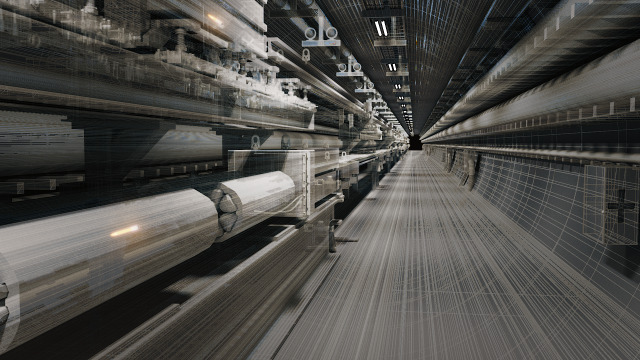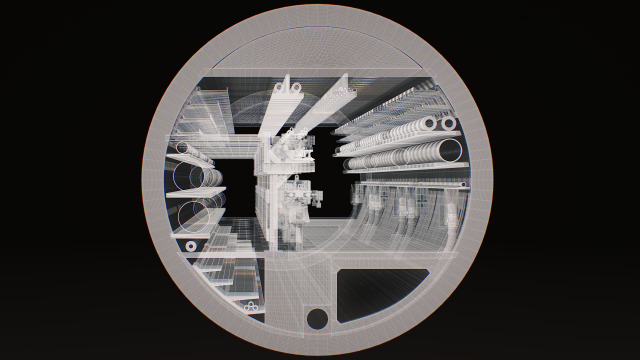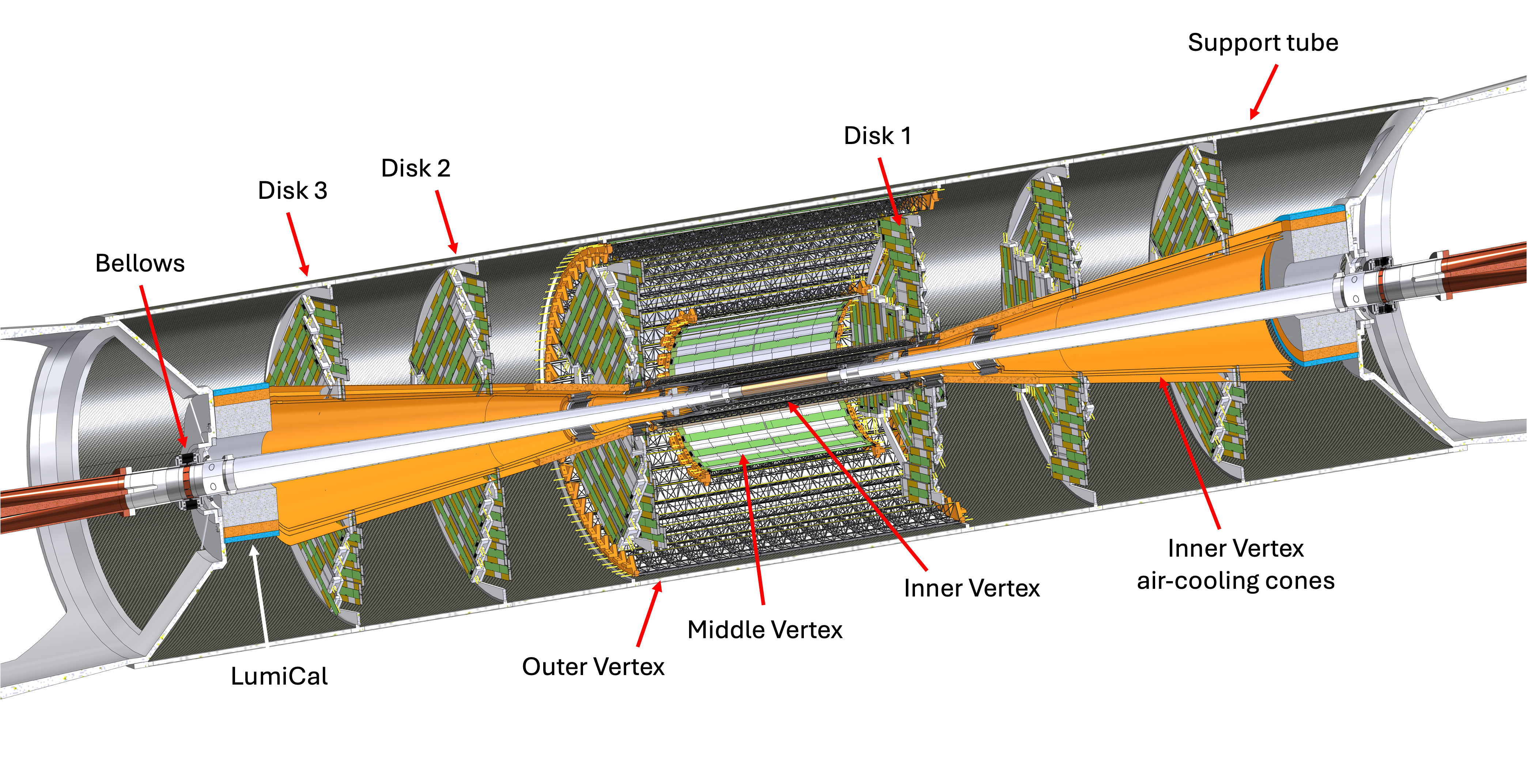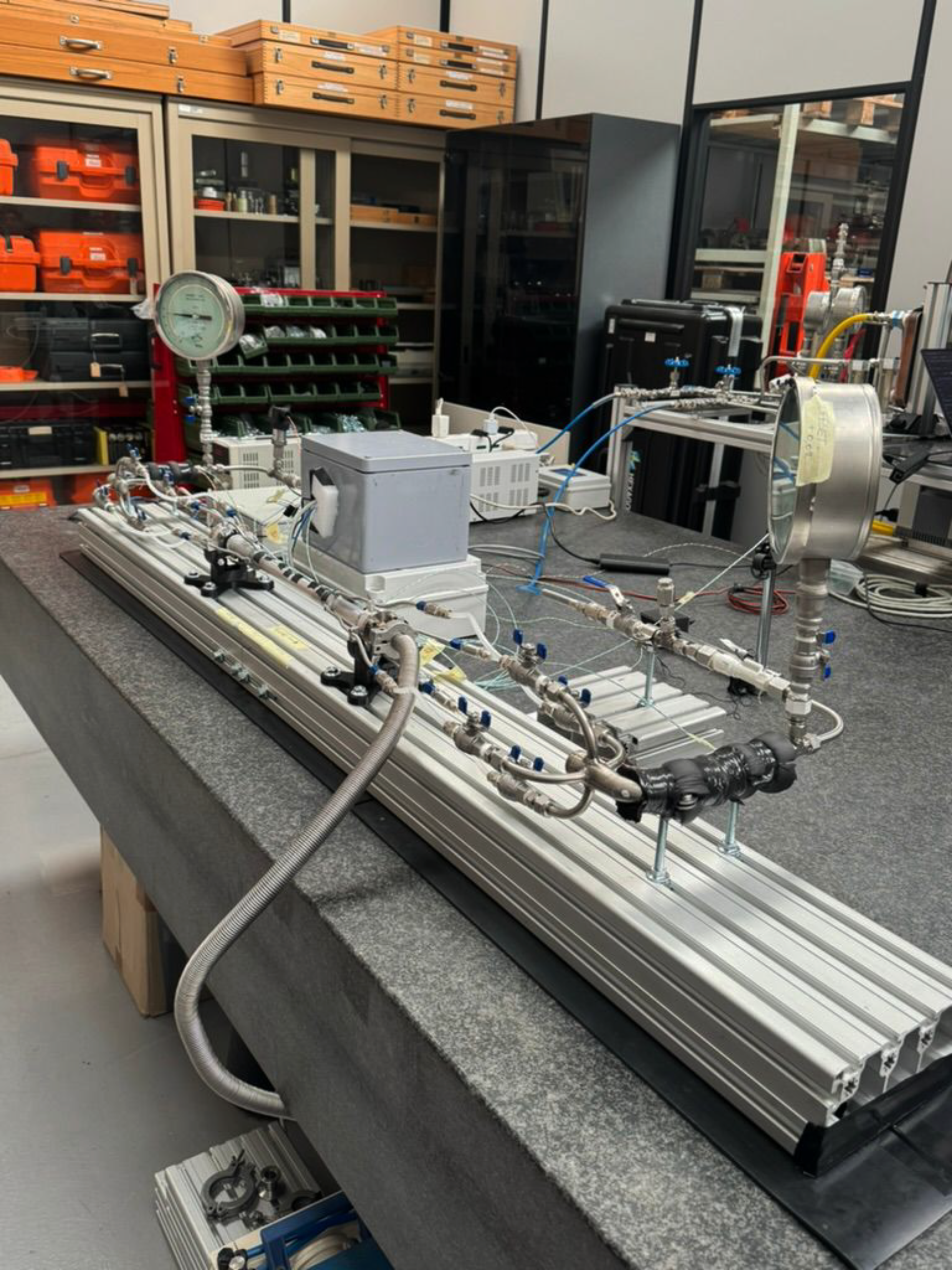The RD_FCC WP2 includes activities related to the accelerator R&D and Machine-Detector Interface (MDI) design for FCC-ee.
The group engineers the MDI design, performs beam optics and beam dynamics studies for the interaction region optimization.
Much of the success of the FCC-ee is related to the ability of the interaction region (IR) design to fulfil the requirements from the accelerator and the detector, while maximising the luminosity to background ratio.
Engineering design of the Interaction Region
Comprehensive design that integrates accelerator and detector components.
The group engineered the IR beampipes, that are in AlBeMet (62% Be, 38%Al), and actively cooled. The central chamber is composed of two 0.35mm layers and a 1mm gap for paraffine cooling flow, while the ellipto-conical chambers have dedicated water-cooling manifolds. The material budget of these beampipe is only 0.6%. A cylindrical carbon fibre structure supports the beampipes and the vertex detector. Connection to the rest of the beam pipe is provided by special IR bellows.
FCC-ee IR mockup in Frascati
A full scale mock-up of the FCC-ee IR and MDI is under realisation in Frascati.
First thermal measurements with an aluminium prototype of the central chamber prove the correct dimensioning of the cooling system. Ellipto-conical beampipes will be soldered to the central chamber and thermal and structural tests will be performed.
IR Beam optics
The LNF group studies the coupling compensation scheme induced by the detector solenoid from the optics of view, determining the anti-solenoids and correctors required to exploit the best collider performance.
Backgrounds and radiation sources
The backgrounds sources can be divided in luminosity backgrounds and single-beam induced backgrounds. In the first category at FCC-ee the most relevant are the Incoherent Pairs Creation (IPC), and particles exiting the machine dynamic aperture after a Radiative Bhabha process. Among the single-beam induced background sources we find Synchrotron Radiation (SR) coming from the last upstream magnets, and high rates of beam losses in the IR coming from the beam halo in the occurrence of a sudden lifetime drop. The estimate of the occupancy induced by these sourced is done using the turnkey software Key4hep.
Other activities in WP2:
• Collective effects
• e+ source and capture system
• e+ damping Ring
• SRF cavities for FCC-ee
• Magnets for FCC-ee/hh





